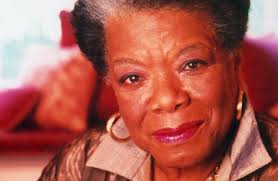 “I've learned that no matter what happens, or how bad it seems today, life does go on, and it will be better tomorrow.
I've learned that you can tell a lot about a person by the way he/she handles these three things: a rainy day, lost luggage, and tangled Christmas tree lights.
I've learned that regardless of your relationship with your parents, you'll miss them when they're gone from your life.
I've learned that making a "living" is not the same thing as making a "life."
I've learned that life sometimes gives you a second chance.
I've learned that you shouldn't go through life with a catcher's mitt on both hands; you need to be able to throw something back.
I've learned that whenever I decide something with an open heart, I usually make the right decision.
I've learned that even when I have pains, I don't have to be one.
I've learned that every day you should reach out and touch someone. People love a warm hug, or just a friendly pat on the back.
I've learned that I still have a lot to learn.
I've learned that people will forget what you said, people will forget what you did, but people will never forget how you made them feel.”
― Maya Angelou
(http://www.goodreads.com/author/quotes/3503.Maya_Angelou)
“I've learned that no matter what happens, or how bad it seems today, life does go on, and it will be better tomorrow.
I've learned that you can tell a lot about a person by the way he/she handles these three things: a rainy day, lost luggage, and tangled Christmas tree lights.
I've learned that regardless of your relationship with your parents, you'll miss them when they're gone from your life.
I've learned that making a "living" is not the same thing as making a "life."
I've learned that life sometimes gives you a second chance.
I've learned that you shouldn't go through life with a catcher's mitt on both hands; you need to be able to throw something back.
I've learned that whenever I decide something with an open heart, I usually make the right decision.
I've learned that even when I have pains, I don't have to be one.
I've learned that every day you should reach out and touch someone. People love a warm hug, or just a friendly pat on the back.
I've learned that I still have a lot to learn.
I've learned that people will forget what you said, people will forget what you did, but people will never forget how you made them feel.”
― Maya Angelou
(http://www.goodreads.com/author/quotes/3503.Maya_Angelou)
Here is the gift of Maya Angelou, that ability to speak directly from her heart into your heart. How does she do this, and with so much power and authority? How does she make us listen and believe her? What rhetorical techniques does she use?
She speaks from the first person, from the powerful “I” of her personal experience. Each one of these sentences holds a story from her life. Each one could become a poem, a short story, a novel.
She uses repetition. In these 212 words she repeats “I’ve learned” at the beginning of 11 of 12 sentences. That repetition is like a drum beat, she becomes the woman of power and experience who is standing on stage, stomping to the rhythm of her experience, drilling that rhythm into your heard, demanding that you listen, that you learn from her. It is the same rhythm, the same demand, made by Dr. Martin Luther King when he repeated, again and again, “I have a dream.”
In the third to the last sentence, Angelou introduces the word “people” and then repeats “people” three times in the last sentence. Angelou is an artist who writes and speaks with passion but never without knowledge of the power of her words. There was a reason for the wording and order of the last three sentences (about people, about herself, about people again). I wonder what that reasoning was, what more was she telling us by the order and positioning of her words?
If you want to strengthen your writing, chose a piece of writing that moves you. Take the time to break it down, analyze the author’s techniques. See what you have learned that will make you a more powerful writer.
